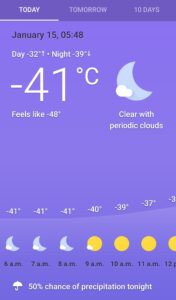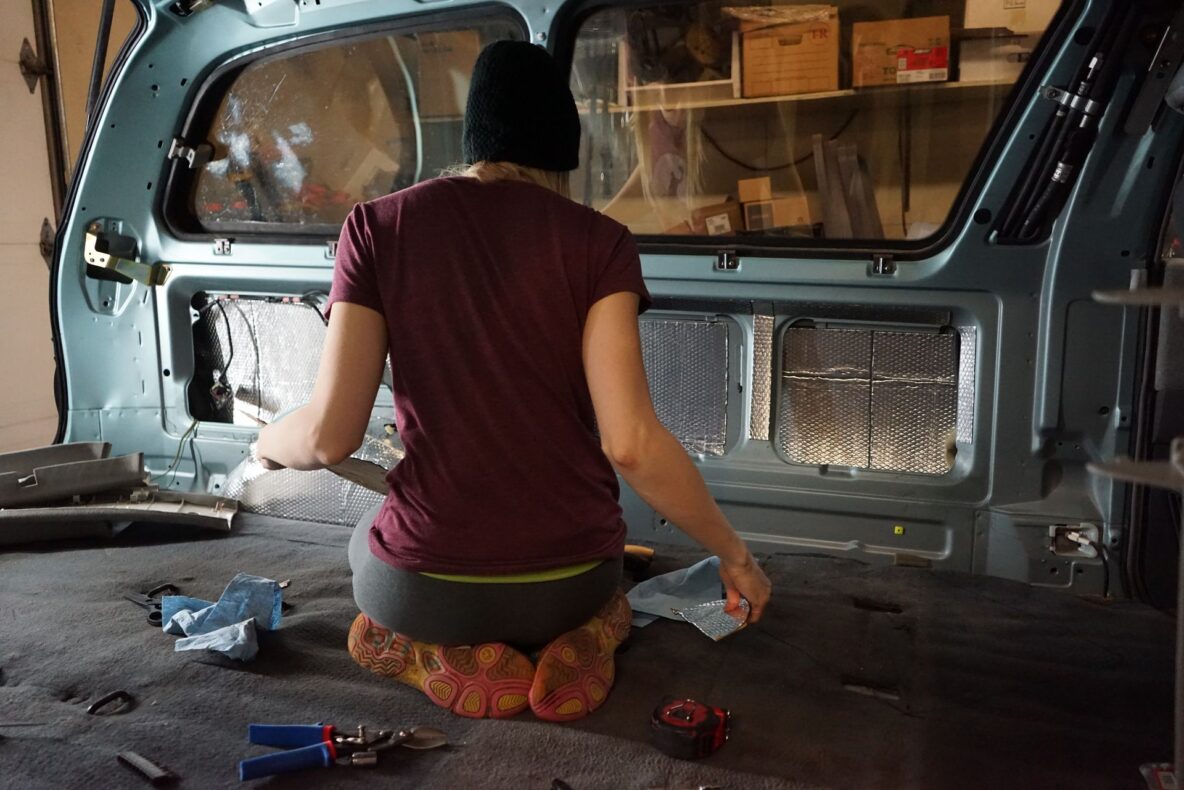Insulation advice from a Canadian.
I’m aware that my views on this are HUGELY unpopular. I’ve been at the brunt of the Facebook flamers many times, but I just can’t keep my mouth shut. Maybe it’s that I’m stubborn, or maybe I’m a sucker for punishment, but I think it’s because you should actually be able learn from someone who lives and breathes the result of their advice.

What’s this advice that is so controversial? It’s that I’d recommend keeping it simple. I live in Canada and use my van to ski all winter, so if anyone needs the right amount of insulation, it’s me.
Personally, I’m on my second van, but my 6th vehicle that I’ve used for sleeping in frigid temps. One of those including the steel bed of a truck. And let me tell you the difference my insulation of choice makes when you use it to separate your body from the icy, cold steel.
The uncomfortable answer is that I’d only ever use a layer of Reflectix in the future, accentuated with a combination of a foil and foam sound deadener. In this van, I used Noico 80 mil Butyl, then Noico Green 170 mil to help keep summer heat out of the van.
“But it has a low R-Value!”
Yeah, I’m aware Reflectix has a lower R-Value than other insulation. What most people don’t know is that R-values are a poor metric by which to judge insulation. Most people fail to acknowledge the reflective properties foil can really provide, as does the R-Value.
Lets talk about the way they test for R-Value for a moment. It’s important to note that the ASTM C518 uses 2 metal plates, and measures the temperature resistance between the two plates. Those plates, must make full contact with a material (just one product, not an assembly of products like you’ll likely end up with in the real world), even though the material might not be designed to be installed that way. What this measures is pure conductivity, all other factors aside.
That might be why the ASTM standards organization created the ASTM C727 in 2019, which is specifically designed to measure the reflective properties of reflective insulation. But, its weakness is that is only measures the amount of energy that is reflected, not how much heat loss is averted thanks to that reflected energy. Needless to say, Reflectix will return 97% of the infrared heat away from itself, so that leaves 3% to seep through it’s conductive structure, which is rated somewhere between R-1 and R-4.55 depending on your installation. 3% of your heat being lost through an R-1 insulative layer seems like a pretty good deal to me.
The real test is when you put a layer of Reflectix between you and a -40C steel truck bed that’s striving to suck the life out of you. Then you’ll catch a glympse of what I’m talking about. It’s significant, even with no air gap at all.
“I still think you’re nuts. I need more insulation!”
While you might be right about me being nuts, it’s not because I’ve frozen to death.
This is the way I see it: you have to take your 2 largest culprits for heat loss into account first. Those are window glass and door seals.
Imagine insulating a box, but one side remains wide open. It doesn’t matter how much you insulate the 5 other sides, you’ll still lose from the 6th side. Realistically, It’s not like a whole wall is missing from your van, but when you have 10-20 linear meters of door seals (measure them, I dare you…), that is the equivalent heat loss of a pretty sizable hole. Add in windows, and that hole gets bigger. I’ve looked at mine with an infrared camera and did the math. The result: anything more than 1/2″ of PS foam is wasted when you factor in the loss from door seals and windows. The only exception is a vehicle like a box-van, where you can limit points of loss with a proper door that has better heat retention than a standard automotive door seal.
Some will argue “well, with 2 inches of insulation I’ll retain heat a lot longer than you will”. They’re right – but when it’s cold, that 2″ will only buy them another 30-60 minutes before getting to the same temp as mine. Is losing time, money, and precious interior space worth another 30 minutes to you? If so, they pile on the insulation.
How does a heater factor in?
Good Question: if you plan on having a heat source, you can do with even less. My Chinese diesel heater puts out 17,000 BTU, and even on the coldest day of the year (-48°C) it was too much, I had to run it at 30-50% of it’s capacity. In the future, I’d never use more than a layer (or two) of Reflectix (although I have 1/2″ of polystyrene in my floor as it’s able to withstand weight much better than Reflectix, and performs better when in direct contact with other materials).
So, take it for what it’s worth. I won’t criticize someone who over-insulates, but it’s totally not necessary unless you’re going to live a lot farther north than I do.

